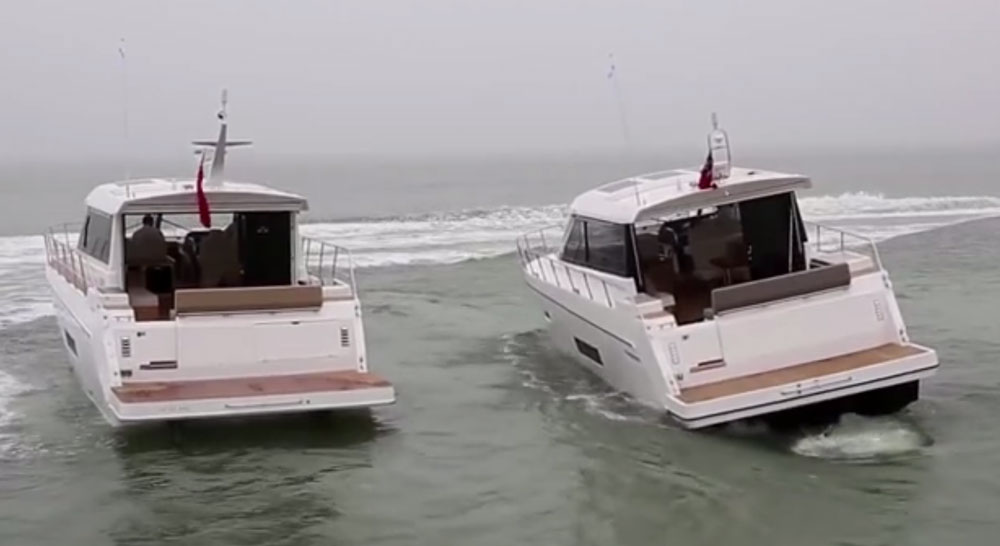Mariners have been dealing with mal de mer since the first seafarer took to the water in a hollowed-out tree trunk, but some people believe the age-old affliction may eventually go the way of the Dodo bird. Is it possible that one day we may hear yachtsmen say, ‘Remember when boats used to roll?’
Absolutely, says Andrew Semprevivo of Seakeeper, Inc., a manufacturer of active gyro stabilizers. “Awareness of the technology is growing, and as it does even seasoned skippers are saying they don’t want to leave the dock without it. Because it substantially reduces roll and creates a more comfortable experience for all passengers, a gyro stabilizer takes some of the anxiety out of the boating experience, in the same way the joystick took stress out of docking and GPS made navigation easier.”

That’s great news for boat owners who have a stabilizer installed on their vessel, but what about those who don’t? Good news: you don’t need to buy a new boat to enjoy the benefits of this modern technology. Retrofitting is an option, and it’s attracting a lot of interest lately. According to Semprevivo, Seakeeper has grown its retrofit business 100 percent in the past year, and models purchased for retrofit now represent 25 percent of sales. Much of the retrofit business has been focused on boats between 50 and 60 feet, but the introduction of a smaller gyro stabilizer in late 2014 (dubbed the Seakeeper 5) has resulted in more installations on boats sized between 30 and 50 feet. “We’ve even installed units on center console boats,” says Semprevivo.
In general, Seakeeper stabilizers are found on boats up to 75 feet. (Larger boats often use hydraulically powered fin stabilizers.) Here’s how the technology works: it’s based on a control-moment gyroscope, which is the same gizmo that stabilizes most spacecraft. Inside the gyro is a spinning flywheel. The gyro generates force, not by spinning a large or heavy flywheel, as most gyros do, but by spinning a small one faster. The system is also energy efficient and quiet—some say you can’t hear this electric-powered unit unless you put your ear to the sole. Another attribute of a gyro stabilizer is that it can be used when a boat is at anchor or in a marina.

So what’s the biggest challenge to a retrofit installation? Finding the space for the gear. A yacht owner may have to give up some stowage to accommodate a unit that’s comparable in size to a generator, or may have to allow technicians to change the mechanical layout of other onboard components to free up enough room. “Most important, these gyros can be installed on all types of boats because they’re flexible,” says Semprevivo. “Unlike traditional fin stabilizers, they don’t have to be set up on centerline, and there’s flexibility in the system’s configuration, too. If the big Seakeeper 9 is too large for a particular boat, we’d install two 5’s. In the end, we size every configuration to achieve a roll reduction of 75 to 95 percent.”
Installations are performed by technicians from the company’s Certified Service Installation Centers, which are now located around the world and in most major ports. If you decide you want to retrofit your boat, technicians will do a sea trial to evaluate it for the appropriate model, and also review how the vessel will be used (coastal cruising or offshore, for instance). The installation is then executed in two to three weeks, often while the boat is in the water at its home port.
A key component of the installation is the design and construction of the mounting stringers, which must be capable of safely transferring the gyro’s torque to the hull structure. Pricing varies depending on the size of the boat and the system, but it typically starts at $5,000 and can range up to $35,000.
For more information, contact Seakeeper.
Related



If you buy a yacht overseas or in a remote location, you need to figure out how to get it home. Here...

